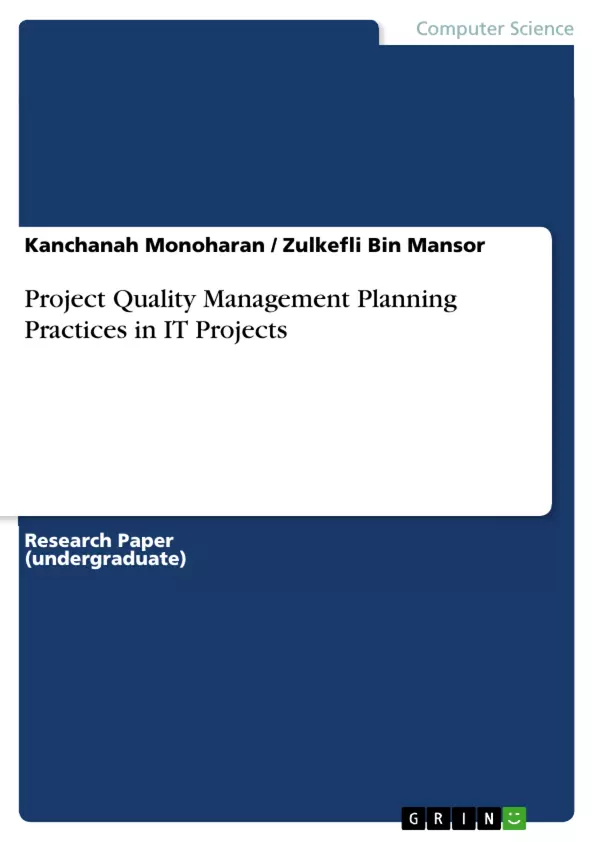Project quality management provides a wide structure to identify quality standards and requirements, implementing quality assurance and control activities and taking suitable decisions for project improvement. The purpose of this research was to investigate project quality management (QM) planning practiced in Information Technology (IT) projects. Another aim was to determine, a proper quality planning (QP) standard framework that should be implemented in IT projects. A deep investigation was carried out on past and current researches to identify the real QM planning dimensions. Subsequently related questions were developed and surveys were conducted on several organizations. The results revealed that majority of the organizations are not practicing the entire important dimensions in QP phase because of lack awareness among the employees. Overall the best practices or standards in these QM planning should be practiced to maintain quality IT projects.
Inhaltsverzeichnis (Table of Contents)
- Introduction
- QM Planning Standards
- Input
- Scope Baseline
- Stakeholder Register
- Cost Performance Baseline
- Schedule Baseline
- Risk Register
- Enterprise Environmental Factors
- Organizational Process Assets
- Training Schedule
- Tools & Techniques
- Cost-Benefit Analysis
- Cost of Quality
- Control Charts
- Benchmarking
- Design of Experiments
- Statistical Sampling
- Flowcharting
- Proprietary QM Methodologies
- Additional Quality Planning Tools
- Output
- Quality Management Plan
- Quality Metrics
- Quality Checklists
- Process Improvement Plan
- Project Document (Updates)
- Input
- Methodology
Zielsetzung und Themenschwerpunkte (Objectives and Key Themes)
This research investigates project quality management (QM) planning practices within Information Technology (IT) projects, aiming to identify a suitable quality planning (QP) framework for implementation. The study explores the key dimensions of QM planning by analyzing existing research and conducting surveys within various organizations.
- The importance of effective QM planning in IT projects.
- The identification and analysis of QM planning dimensions.
- The development and evaluation of a suitable QP framework for IT projects.
- The impact of organizational factors on QP practices.
- The importance of employee awareness and training in achieving effective QM planning.
Zusammenfassung der Kapitel (Chapter Summaries)
The research delves into the critical aspects of QM planning in IT projects. It first explores the three core areas of QP: Input, Tools & Techniques, and Output, outlining essential elements for successful quality management.
The "Input" section examines key factors such as the project scope, stakeholder engagement, cost and schedule baselines, risk management, organizational processes, and training requirements. The "Tools & Techniques" section explores various methods used for effective QM planning, including cost-benefit analysis, cost of quality, control charts, benchmarking, design of experiments, statistical sampling, flowcharting, and proprietary QM methodologies. Finally, the "Output" section discusses the critical deliverables of the QM planning process, such as the quality management plan, metrics, checklists, process improvement plans, and project document updates.
The study also delves into the methodology used to gather and analyze data, employing a quantitative approach with Likert scale questionnaires distributed to IT departments within various organizations. The research highlights the importance of employee awareness and training in successful QM implementation.
Schlüsselwörter (Keywords)
Project quality management, IT projects, quality planning, QM planning dimensions, QP framework, employee awareness, training, quality assurance, quality control, data analysis, survey methodology, Likert scale questionnaires.
- Quote paper
- Kanchanah Monoharan (Author), Dr. Zulkefli Bin Mansor (Author), 2012, Project Quality Management Planning Practices in IT Projects, Munich, GRIN Verlag, https://www.hausarbeiten.de/document/201174


